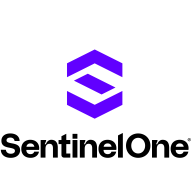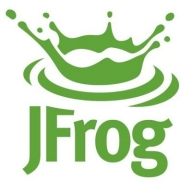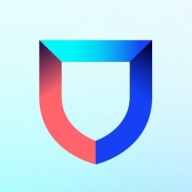


Lacework FortiCNAPP and JFrog Xray compete in cloud security solutions. JFrog Xray potentially has the upper hand due to its comprehensive vulnerability scanning and integration with DevSecOps workflows.
Features: Lacework FortiCNAPP offers automated anomaly detection, compliance monitoring, and robust protection for cloud environments. It excels in detecting anomalies and supports multiple compliance standards like PCI and SOC 2. JFrog Xray provides in-depth vulnerability management, artifact scanning, and curation capabilities, integrating natively with JFrog's Artifactory and enhancing DevSecOps functions.
Room for Improvement: FortiCNAPP could enhance its artifact scanning and DevSecOps integration. Improvements in its alert system to reduce noise and increase actionable insights may be beneficial. JFrog Xray might benefit from streamlining its deployment complexity. Enhanced user interface and broader cloud-native capabilities could further strengthen its offering.
Ease of Deployment and Customer Service: Deploying Lacework FortiCNAPP is straightforward with easy cloud integration and responsive customer service. It is praised for its ease of use and rapid deployment. JFrog Xray requires integration into existing CI/CD pipelines which can be complex but is supported by detailed documentation and knowledgeable customer assistance.
Pricing and ROI: Lacework FortiCNAPP is cost-effective with a competitive setup cost focused on ROI through efficient cloud protection. JFrog Xray involves a higher initial investment due to its advanced features and deep integration with DevSecOps, providing a significant depth of protection that justifies the premium pricing.



SentinelOne Singularity Cloud Security protects cloud workloads, offering advanced threat detection and automated response. It integrates seamlessly with cloud environments and secures containerized applications and virtual machines against vulnerabilities.
SentinelOne Singularity Cloud Security is renowned for its efficiency in mitigating threats in real-time. The platform integrates effortlessly with existing cloud environments, ensuring robust cloud security management with minimal manual intervention. Securing containerized applications and virtual machines, it excels in threat intelligence and endpoint protection. However, improvements are needed in performance during high workload periods, and more integrations with third-party tools and better documentation would be beneficial. Users often find the installation process complex, support response times slow, and the dashboard's navigation unintuitive.
What are the key features of SentinelOne Singularity Cloud Security?In specific industries, SentinelOne Singularity Cloud Security is implemented to safeguard critical data and infrastructure. Organizations in finance, healthcare, and technology depend on its real-time threat detection and automated response to protect sensitive information. Its ability to secure containerized applications and virtual machines is particularly valuable in dynamic environments where rapid scaling is necessary.
JFrog is on a mission to enable continuous updates through Liquid Software, empowering developers to code high-quality applications that securely flow to end-users with zero downtime. The world’s top brands such as Amazon, Facebook, Google, Netflix, Uber, VMware, and Spotify are among the 4500 companies that already depend on JFrog to manage binaries for their mission-critical applications. JFrog is a privately-held, global company, and is a proud sponsor of the Cloud Native Computing Foundation [CNCF].
If you are a team player and you care and you play to WIN, we have just the job you're looking for.
As we say at JFrog: "Once You Leap Forward You Won't Go Back!"
Lacework FortiCNAPP provides robust cloud security, combining vulnerability management and multi-cloud insight with user-friendly controls, machine learning detection, and compliance support.
Lacework FortiCNAPP specializes in cloud security by merging machine learning anomaly detection with agent-based vulnerability management to offer detailed alerts and compliance reports. Its comprehensive approach allows continuous monitoring across AWS and Kubernetes, providing insights from an attacker's perspective. The platform offers automation and seamless Slack integration, facilitating collaborative and efficient cloud security management. Users value its ability to handle multi-cloud environments and scan IAC scripts, configurations, and compute nodes across AWS and GCP.
What are the key features?Organizations across sectors leverage Lacework FortiCNAPP for cloud security, focusing on compliance, security posture, and vulnerability management. It is widely used for monitoring AWS and Kubernetes environments, scanning IAC scripts, configurations, and securing compute nodes. It supports multi-cloud security posture management and log ingestion, enabling companies to maintain strong cloud infrastructures without dedicated security layers.
We monitor all Vulnerability Management reviews to prevent fraudulent reviews and keep review quality high. We do not post reviews by company employees or direct competitors. We validate each review for authenticity via cross-reference with LinkedIn, and personal follow-up with the reviewer when necessary.